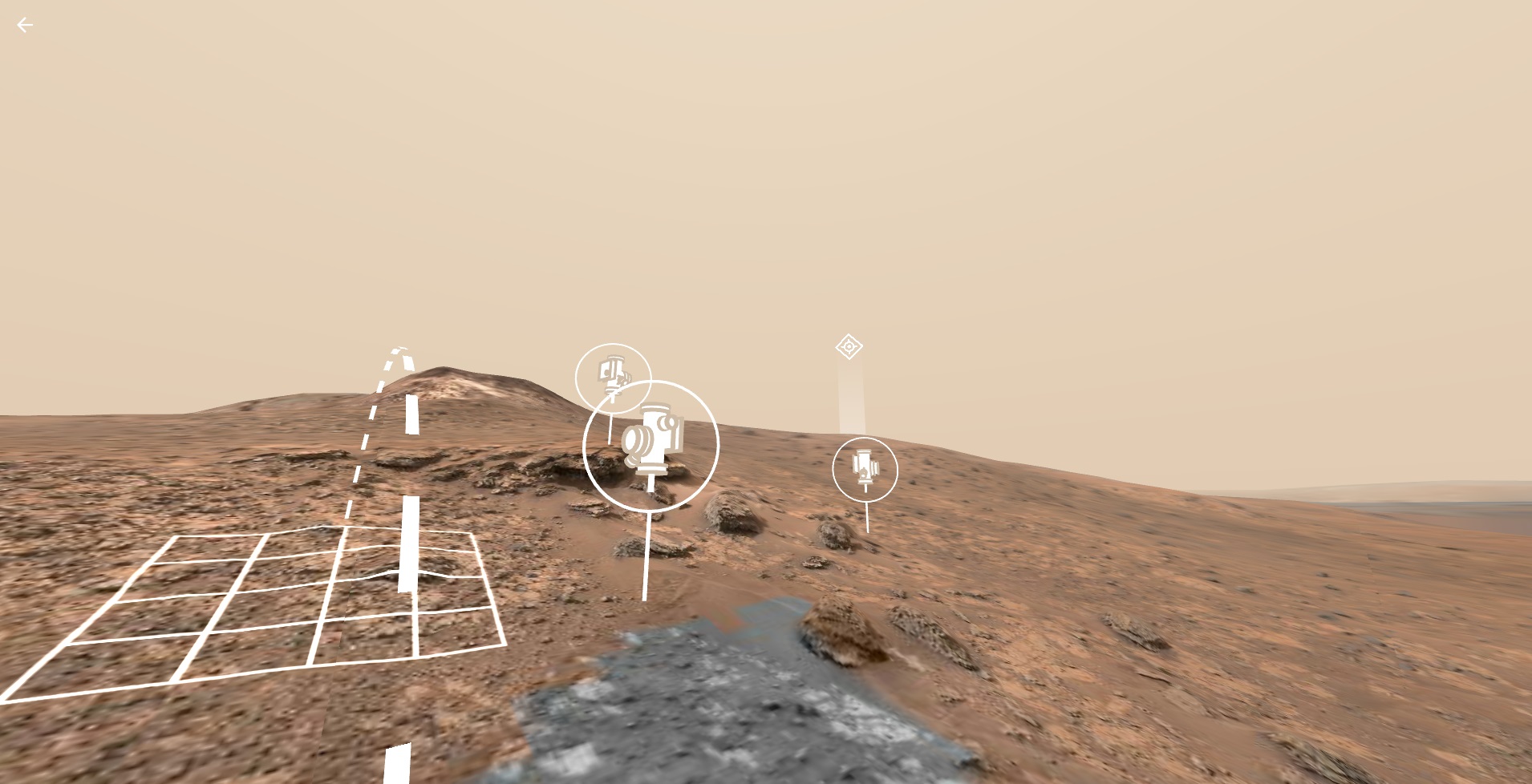'Access Mars' Lets You Explore Mars In VR--From Your Browser
Unless you have superhuman powers, the only way to “visit” Mars is by looking at online images captured by the Curiosity rover. For a more immersive experience, you could view these images as one massive 3D model in AR (that is, if you’re lucky to have one of Microsoft’s HoloLens devices). That changes today as Google announced Access Mars, which allows you to explore the Red Planet’s surface with the same 3D model right from your web browser.
With just your mouse, you can move around the Martian landscape and check out some points of interest, which are highlighted by white icons. These can provide information about Curiosity’s mission, the rover itself, and some of its major findings. For instance, visiting the Pahrump Hills area reveals that one of JPL’s main objectives with Curiosity was to reach a specific rock formation called Mount Sharp. During the journey, the rover would drill holes in order to obtain and analyze minerals. Based on the data gathered, scientists can find out more about the planet, and more importantly, its potential to support human life.
Just like the Destination: Mars experience and another demo at NASA’s Jet Propulsion Lab (JPL) in Pasadena, California, Access Mars uses OnSight, a “mission operations tool” used by JPL scientists to explore Mars from their computer or AR devices. According to Alex Menzies, JPL’s software lead on VR and AR projects, NASA receives images from the rover every day--a series of panoramic shots of the surrounding area. JPL then uses algorithms to match all of these images together to create an accurate 3D model of the area.
This model is then used by scientists such as Katie Stack Morgan, whose voice you hear in the Access Mars experience, to find telltale clues of life on Mars. She told us that she and her team are trying to find silica, a bright rock formation that indicates water traveling through the area. By following the trail of silica, Morgan hopes to find a source of water on Mars.
Access Mars is not just accessible via a web browser; you can actually view it through different devices, such as your smartphone and laptop. You can even use your own VR device (if you own one) for an extra layer of immersion. This type of technology is possible thanks to the WebVR standard, which was developed by Oculus as a way to bring the virtual reality experience to the masses without spending too much money on an expensive head-mounted device. Access Mars is actually part of a larger group of WebVR experiments, which include a new tool to create frame-by-frame animations in 3D and a visual assistant to show off complex math concepts.
Get Tom's Hardware's best news and in-depth reviews, straight to your inbox.
Rexly Peñaflorida is a freelance writer for Tom's Hardware covering topics such as computer hardware, video games, and general technology news.
-
robcolecycling You might want to check out "Hello Mars" on Daydream View VR?Reply
After a breath-taking landing experience, there is a full exploration mode where you directly pilot the Mars Rover. Highly recommend for space fans!
